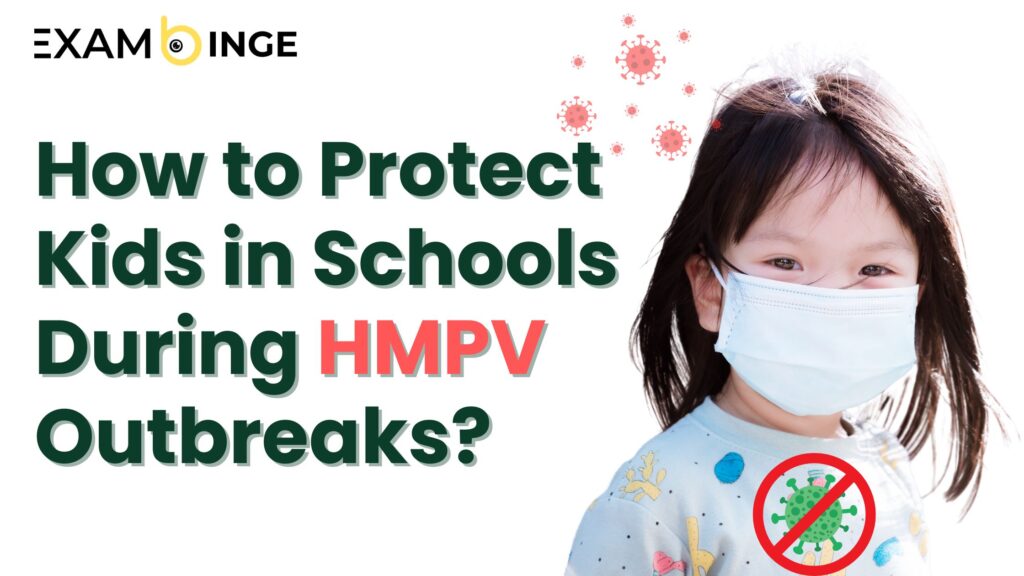Respiratory illnesses like Human Metapneumovirus (HMPV) can spread rapidly in schools, putting kids at risk. With rising cases globally, parents and educators must take proactive steps to safeguard children’s health. This comprehensive guide explains the causes, risks, and preventive measures to protect kids during an HMPV outbreak in schools.
What is HMPV?
HMPV, or Human Metapneumovirus, is a respiratory virus that primarily affects the lungs and airways. It is closely related to other viruses like RSV (Respiratory Syncytial Virus) and can cause mild to severe respiratory illnesses in individuals of all ages.
How HMPV Spreads
HMPV spreads through:
- Close Contact: Physical proximity to an infected person increases the risk of transmission.
- Respiratory Droplets: Coughing, sneezing, or even talking can release droplets carrying the virus.
- Contaminated Surfaces: Touching infected surfaces and then touching your face (eyes, nose, mouth) can lead to infection.
Why Kids Are More Vulnerable
Children, especially those under five years of age, are more susceptible to HMPV because:
- Their immune systems are still developing.
- They often come into close contact with others in classrooms, playgrounds, and shared spaces.
- Younger kids may not have established good hygiene practices, such as washing hands frequently.
Why Schools Are High-Risk Zones
Schools are densely populated environments, making them ideal for the rapid spread of respiratory viruses like HMPV. Kids share toys, books, and desks, and often engage in close physical contact during playtime. Without proper precautions, an outbreak can quickly affect large groups of students.
Symptoms of HMPV in Kids
Identifying the symptoms early can help in timely intervention. Common symptoms of HMPV include:
- Runny or congested nose
- Cough and sore throat
- Fever and chills
- Fatigue and muscle aches
- Difficulty breathing (in severe cases)
Severe cases can lead to complications like pneumonia or bronchiolitis, especially in children with pre-existing conditions or weakened immune systems.
Steps to Protect Kids in Schools During HMPV Outbreaks
1. Promote Good Hygiene Practices
Teaching and encouraging good hygiene habits is the first step in preventing HMPV outbreaks. Here’s what schools and parents can do:
- Handwashing: Teach kids to wash their hands with soap and water for at least 20 seconds, especially before eating or after using the restroom.
- Avoid Face Touching: Children should avoid touching their eyes, nose, and mouth with unwashed hands.
- Cough and Sneeze Etiquette: Encourage kids to cough or sneeze into their elbows or use a tissue and dispose of it immediately.
2. Regular Cleaning and Disinfection
Frequent cleaning of shared surfaces is crucial to minimizing the spread of HMPV. Schools should:
- Disinfect high-touch areas such as doorknobs, desks, and playground equipment.
- Clean classrooms, restrooms, and common areas daily with appropriate cleaning agents.
3. Improve Ventilation
Good air circulation reduces the concentration of airborne viruses. Schools can:
- Open windows and doors to allow fresh air circulation.
- Install air purifiers or use HVAC systems with high-efficiency filters.
- Limit overcrowding in classrooms by spacing out seating arrangements.
4. Encourage Sick Kids to Stay Home
One of the most effective ways to control the spread of HMPV is to ensure that symptomatic children stay home. Parents should:
- Monitor their kids for symptoms like fever, cough, or difficulty breathing.
- Keep their child home if they display any signs of illness, even mild ones.
Schools should have clear policies in place to encourage sick leave without penalizing students.
5. Mask Usage During Outbreaks
Wearing masks can significantly reduce the spread of respiratory droplets. While masks may not be mandatory, they can be strongly recommended during an outbreak. Schools can:
- Provide masks to students and staff who may not have access to them.
- Educate children on the proper way to wear and dispose of masks.
6. Conduct Awareness Programs
Educating students, teachers, and parents about HMPV is essential to curbing its spread. Schools can:
- Organize awareness workshops to explain the symptoms and preventive measures.
- Share information through newsletters, posters, or digital platforms.
7. Nutrition and Immunity Boosters
A healthy immune system can fight infections more effectively. Parents and schools can:
- Provide balanced meals with fruits and vegetables rich in vitamins C and D.
- Encourage kids to stay hydrated throughout the day.
- Consider probiotics and immunity-boosting supplements after consulting a healthcare provider.
Role of Parents and Educators
The combined efforts of parents and educators are key to protecting kids from HMPV. Here’s how they can collaborate:
- Parents:
- Monitor their child’s health daily.
- Communicate promptly with the school if their child falls sick.
- Reinforce hygiene practices at home.
- Educators:
- Maintain cleanliness and ventilation in classrooms.
- Identify and isolate symptomatic children until their parents arrive.
- Provide emotional support to kids affected by illness or isolation.
FAQs
Q1: Can HMPV be prevented with a vaccine?
Currently, there is no vaccine for HMPV. Preventive measures like hygiene and symptom management remain the best defenses.
Q2: How is HMPV different from the common flu?
While both HMPV and flu are respiratory illnesses, they are caused by different viruses. Flu symptoms often include muscle aches and high fever, whereas HMPV primarily causes upper respiratory symptoms.
Q3: When should a doctor be consulted?
If a child experiences difficulty breathing, persistent fever, or extreme fatigue, it’s essential to seek medical attention immediately.
Conclusion
Preventing the spread of HMPV in schools requires a team effort. By promoting hygiene, ensuring proper ventilation, and encouraging awareness, we can create a safe environment for kids. Parents and educators must work hand in hand to protect children’s health during an HMPV outbreak. Small, consistent steps can make a significant difference in reducing the impact of this virus.
If you enjoyed this blog, don’t miss out on our previous one How Ratan Tata Revived Jaguar and Land Rover




